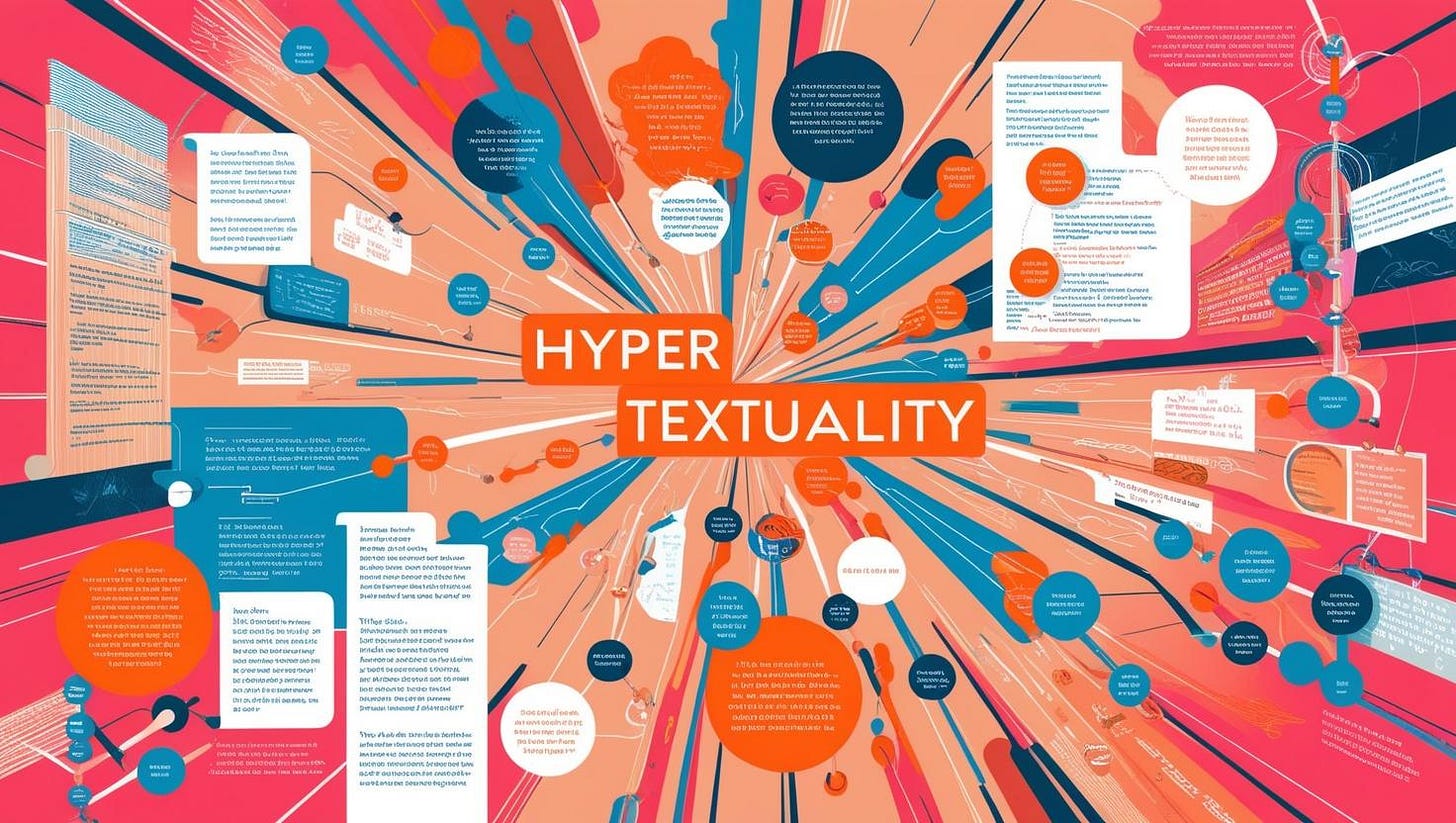The Easy Guide to Hyperlinking in Online Journalism
This week, we dive into the do's and dont's of hyperlinking in online journalism. We'll explore the foundations, purpose and where it fits in with the ever-evolving digital landscape in journalism.
The Three Features of Online Writing
According to Steensen (2011), the three features of online writing are:
Hypertextuality
Interactivity
Multimediality
For Steensen, the purpose of identifying these features is to highlight the importance for online journalism to keep up with technological changes.
“Online feature journalism might embrace discourses of online communication by inviting readers to participate on the production side of the discursive practice” (Steensen, 2011).
For now, we are just focussing on hypertextuality.
Hypertextuality
This practice refers to the action of connecting texts through links.
Multiple narratives and ideas can co-exist and be explored simultaneously, making it especially relevant in today’s digital landscape.
Hypertextuality transforms storytelling and reader experience, creating more interactive and participatory engagement with the text.
What is hyperlinking?
Definition: an electronic link providing direct access from one distinctively marked place in a hypertext or hypermedia document to another in the same or a different document.
So, in a nutshell…
Hyperlinking is the process of embedding a link within your text to direct users to other webpages instantly.
It might look something like this:

FYI, the orange underlined words in the text are hyperlinked to other web pages.
Multimedia journalism is evolving to ensure that readers are engaged and accurately informed.
Hyperlinking is one of the ways that journalists provide readers with the direct sources of their information.
This practice not only helps to legitimise information but allows for more interactivity and engagement of readers “by offering them to click and surf to other parts of the web” (Peng, Tham, Xiaoming, 1999).
Hyperlinks keeps online writing concise and more succinct, allowing readers to follow-up with questions they may have regarding information in the article.
“Links enhance the news by creating more interactivity, credibility, transparency and diversity” (De Maeyer, 2015).
What’s the purpose?
The Reader is in Control
Hyperlinking empowers readers to navigate their own online media news consumption.
Readers can choose their own path, focus on what interests them, and engage with the content at their own pace - on their own terms (Picard, 2008).
The reader is in the drivers seat, creating a non-linear reading experience that takes them from one destination to the next.
Journalism is Transparent
Hyperlinking plays a crucial role in legitimising information by providing direct access to sources. Readers can see where the information comes from, making it easier to trust the accuracy of the claims being made.
Another advantage of hyperlinking is that it allows readers to follow up on sources for further exploration. Instead of simply accepting the information presented, readers can click on hyperlinks to access original studies or articles that provide deeper insight.
Hyperlinking provides additional background information and context, which enhances the reader’s understanding. Audiences are not only informed about the immediate subject but also gain knowledge about the broader context in which it exists.
The Audience is Prioritised
Audiences care about where their information is coming from. As journalists, we have the responsibility to provide accurate information, using credible sources.
It is fundamental that we secure the trust of our readers by giving them full access to the background of all information we put out there.
“As well as providing potential visual illustrations for your story, it allows users to more instantly interact with with the material involved” (Bradshaw, 2023).
Hyperlinks make this process as easy and efficient as possible.
Recent Study on Hyperlinking
A study, published in PLOS ONE, conducted eye-tracking experiments to assess how coloured words and hyperlinks affect reading behaviour.
The researchers found that while multiple coloured words didn't negatively impact reading, single coloured words reduced skipping rates, indicating increased attention (Fitzsimmons et. al, 2019).
Additionally, hyperlinks on uncommon words prompted readers to re-read sentences, suggesting that hyperlinks highlight important information and encourage deeper engagement with complex concepts.
Here is a summary of the findings:
Hyperlinking increases audience engagement
The placement and relevance of hyperlinks significantly impacts their effectiveness
Readers often associate hyperlinks with credibility, particularly when they lead to authoritative sources.
Do’s and Don’ts of Hyperlinking
Do’s:
The link should make sense on its own
The link should take you to a specific page of a website
You should clearly outline if the link is not a website, e.g. “In the report (PDF)”.
Don’ts:
Do not insert a URL
Do not say “Click Here”.
“Links are the lifeblood of the web - and one of the first things people look for when they visit a page” (Bradshaw, 2023).
What should your hyperlinks look like?
Your hyperlink should clearly describe the information the linked page provides.
In this example, the well-crafted hyperlink clearly conveys what content the reader can expect to find on the linked webpage.
Signing Off
Writing for the web is more than just words. It’s about choosing the right mix of text, media, and platforms to engage your audience effectively.
Digital storytelling has evolved with links, GIFs, and interactive features. An informal, engaging tone now shapes much of online writing.
With so many options, a solid content strategy is essential. It helps streamline decisions and keeps your storytelling focused.
“Be brave, take risks, and accept that sometimes things will not quite work out—but that’s OK: you will learn from each experiment and be a better storyteller in the long run” (Bradshaw, 2023).
This has been your go-to guide for hyperlinking in online journalism articles and why it is an important feature of news writing in today’s evolving digital landscape.
As online journalism continues to evolve, mastering the art of hyperlinking remains essential for delivering clear, concise, and reliable content.








This was really informative! I feel well equipped to use hyperlinks now